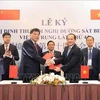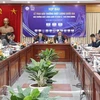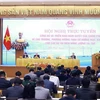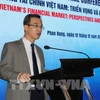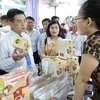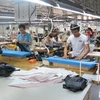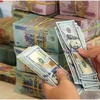Hanoi (VNA) - Customers must be at the centre of banks’ attention as they make a move towards digital transformation in an effort to adapt to a changing landscape of financial innovation and disruptive technologies.
This was said by head of Retail Banking at VP Bank, Sandeep Deobhakta, at a conference held in Hanoi on January 12, titled, ‘The Future of Finance in Vietnam 2017.’
Deobhakta, who has been holding this position since May 2015, said customers in Vietnam are very open to new technologies and the nascent retail banking industry in Vietnam can also adopt these technologies faster than other markets if they put customers first.
In the future, traditional banks might lose business to companies that employ disruptive innovations if they failed to deliver better, simpler and faster solutions to customers, Deobhakta cautioned.
VP Bank has been working with Timo, Vietnam’s first mobile-only bank, giving customers better solutions to manage their money, bills and the ability to top up their mobile cards through the Timo app. At Timo Hangouts, one can forget about a typical bank branch and instead enjoy a coffee as one opens an account and uses bank services.
Timo has about 4,000 customers in the HCM City and opened a Timo Hangout in Hanoi last October, looking to attract more than 100,000 users by next year.
Vietnam has a huge untapped market for financial innovation, with only 20 percent of the population having bank accounts and 3 percent owning credit cards, Foo Boon Ping, managing editor of The Asian Banker, said at the conference.
“The stable GDP growth of around 6 to 7 percent, low wages, a large population with a high savings and strong innovative approach are crucial factors that will accelerate the financial and industrial development in the Vietnamese market,” he said.
“Digital transformation is driven by real business needs to transform to become more cost efficient and to serve your customers as their behavior and preferences change,” he added.
According to fintechnews.sg, there are only about 36 fin-tech companies in Vietnam, with most focusing on providing consumers and merchants with online and digital payment solutions.-VNA
VNA


